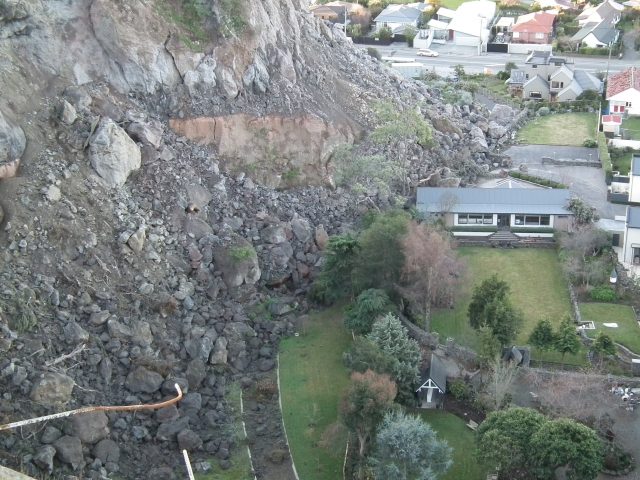8 September 2016
PhD opportunity: A platform for regional scale earthquake induced landslide hazard assessment
Posted by Dave Petley

A PhD opportunity in New Zealand in earthquake induced landslide hazard assessment
.
A Platform for Regional-Scale Earthquake induced landslide hazard assessment
Chris Massey at GNS Science in New Zealand is advertising the following very interesting PhD opportunity in earthquake induced landslide hazard assessment:
Research Goal
Develop a planning and operational tool to forecast the number, volume and runout distance of landslides generated by different types and magnitudes of earthquakes in the varying materials and slopes around New Zealand.
Forecasting the location and size of earthquake-induced landslides as well as the distance they might travel down a slope are each complex process. Currently most approaches use statistical models, based on data from landslides triggered by past earthquakes located around the world. Many of these approaches focus on landslide susceptibility only, by identifying where landslides are more likely to occur in the terrain, rather than hazard, which also incorporates the downslope area affected by the debris should the landslide occur. In addition, few such statistical susceptibility relationships are calibrated to New Zealand geology and terrains. Many of the larger landslides triggered by recent earthquakes have a strong structural geological control and are not well predicted by the statistical models. A sub-component of this research will be to investigate relationships between geological structure, landslide-failure mechanisms and volume.
In this project, the PhD candidate would aim to address these issues by developing a computational GIS-platform to enable high-resolution regional-scale landslide hazard identification for different regions of New Zealand. This will comprise two components:
- A national probabilistic coseismic landslide hazard map (including runout), driven by the probabilistic seismic hazard model (PHSM) and with hazard related to susceptibility parameters calibrated with NZ and overseas landslide distributions and other information. This can be updated as the PHSM is updated, and will inform management of earthquake emergencies and other planning
- A rapid-assessment routine driven by the magnitude, location and depth, and shaking intensity of a specific earthquake. This will be based on 1 (above), and calibrated against known NZ earthquakes; it will inform initial response operations for a specific event.
The candidate will have access to new earthquake-induced landslide datasets captured for some recent earthquakes in New Zealand. The research is timely and will be used to develop the national New Zealand landslide forecast system being developed by GNS Science and others over the next five years.
The person
We are looking for a PhD candidate so that we can apply for a fully-funded PhD scholarship, including University fees and living allowance. The candidate, if successful, would be enrolled at the University of Canterbury, New Zealand, and work in close collaboration with GNS Science and QuakeCoRE. The candidate would be expected to spend time in both Wellington and Christchurch, two of New Zealand’s more interesting cities.
If interested, please send [email protected] your CV before the 23rd September 2016.
Other blog posts of relevance regarding earthquake induced landslide hazard assessment in New Zealand:
- Sumner rockfalls – videos from the M=5.7 earthquake near Christchurch yesterday
- Rockfall and landslide damage in the Port Hills from the Christchurch earthquake sequence
- Port Hills, Christchurch: demolishing the rockfall threatened houses
- Rockfall risk assessment reports for the Port Hills, Christchurch, New Zealand
- Away from AGU – images of rockfalls as they occurred during the June 2011 Christchurch earthquake
- Images of landslides from the Christchurch earthquakes part 1: boulder damage to a house
- Images of landslides from the Christchurch earthquakes part 2: evil dancing boulders
- Images of landslides from the Christchurch earthquakes part 3: topographic amplification at the cliff tops
- Landslides from the Christchurch earthquakes part 4: large-scale cliff collapses
- Landslides from the Christchurch earthquakes part 5: landslides that involve sliding


 Dave Petley is the Vice-Chancellor of the University of Hull in the United Kingdom. His blog provides commentary and analysis of landslide events occurring worldwide, including the landslides themselves, latest research, and conferences and meetings.
Dave Petley is the Vice-Chancellor of the University of Hull in the United Kingdom. His blog provides commentary and analysis of landslide events occurring worldwide, including the landslides themselves, latest research, and conferences and meetings.